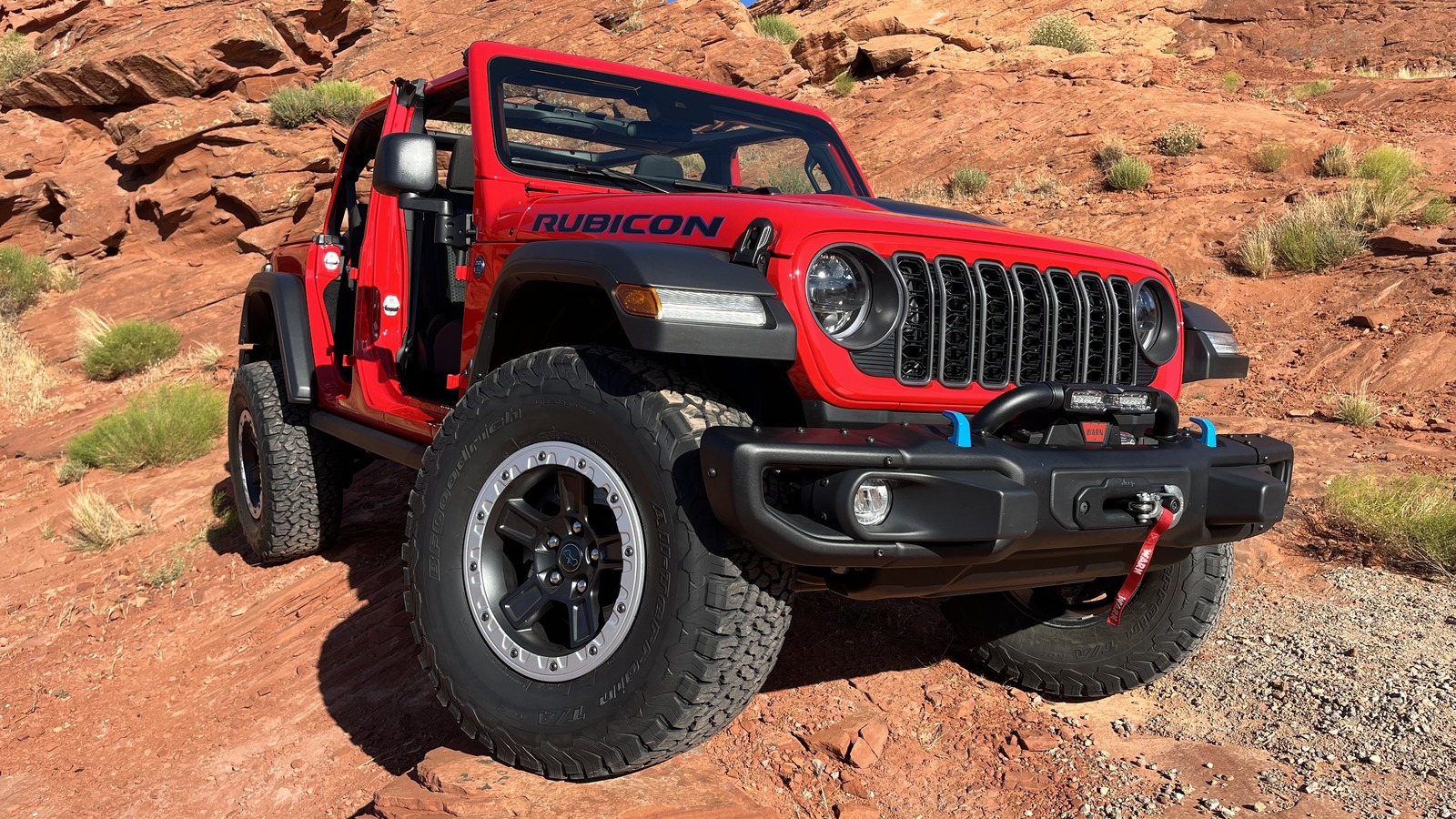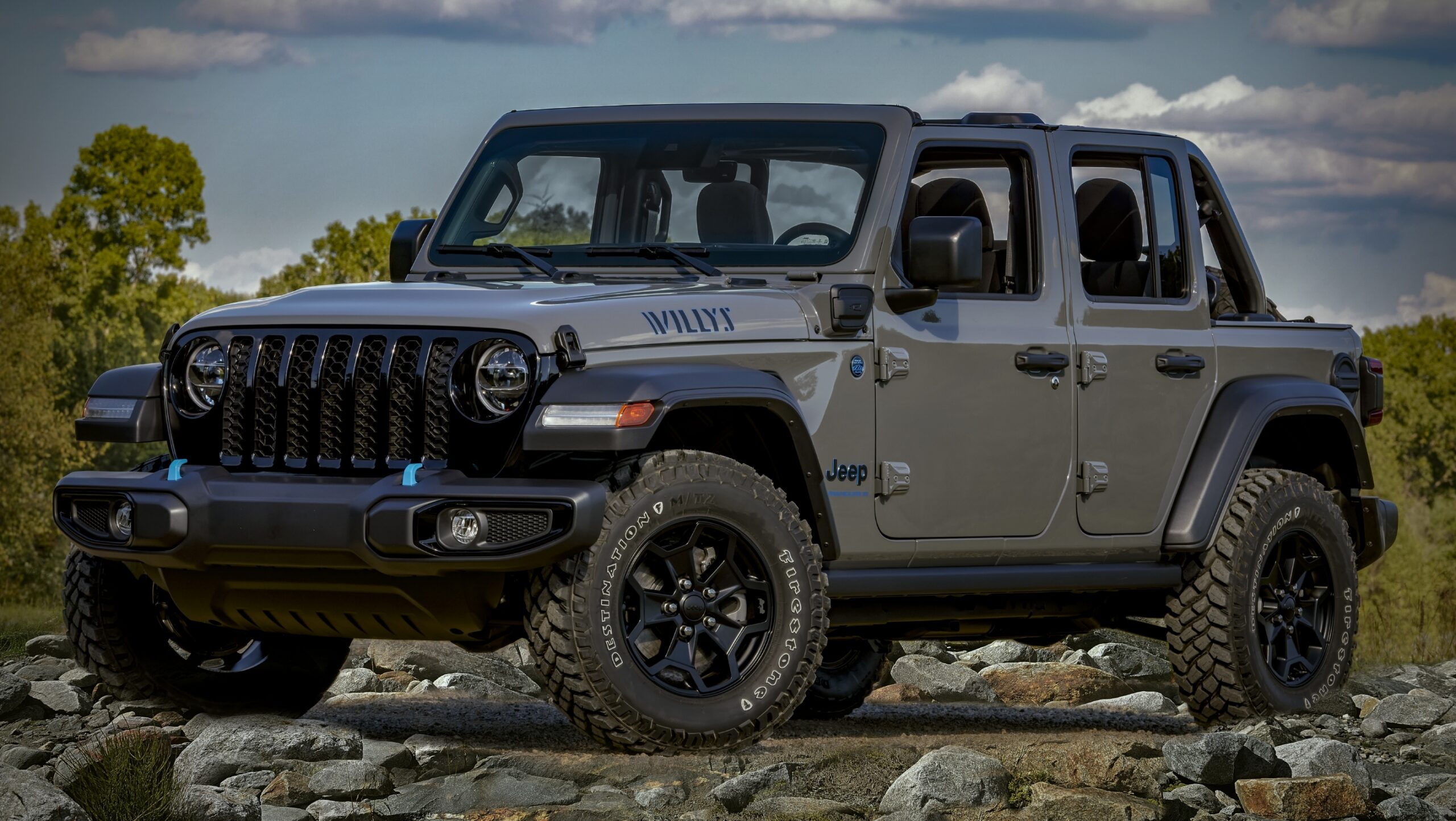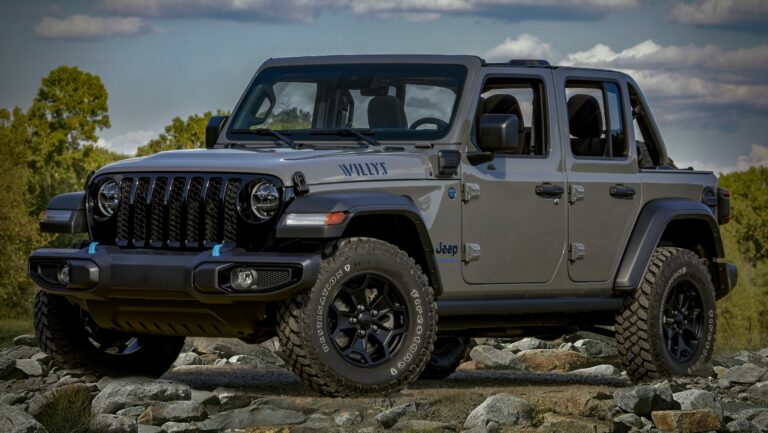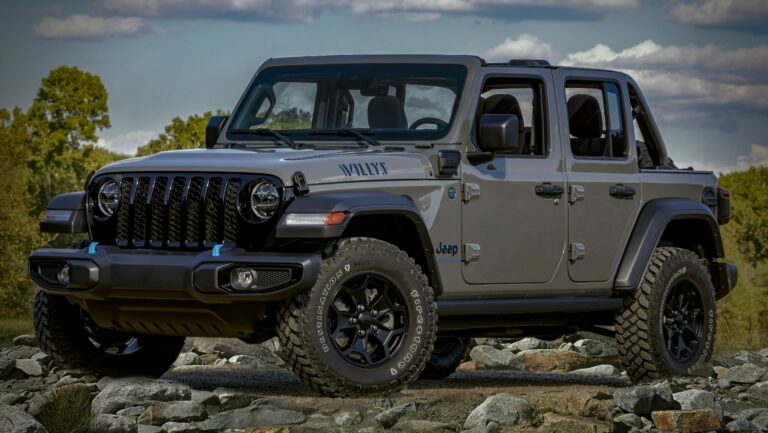Jeep Wrangler 2 Door Hardtop Hoist: Elevate Your Open-Air Freedom
Jeep Wrangler 2 Door Hardtop Hoist: Elevate Your Open-Air Freedom jeeps.truckstrend.com
The iconic Jeep Wrangler embodies the spirit of adventure, offering unparalleled off-road capability and the liberating experience of open-air driving. For owners of the 2-door hardtop model, however, transitioning from a secure, weather-resistant cabin to a wind-in-your-hair adventure often presents a significant challenge: removing and storing the heavy, cumbersome hardtop. This is where the Jeep Wrangler 2 Door Hardtop Hoist becomes an indispensable accessory. More than just a convenience, a dedicated hardtop hoist is a crucial investment in safety, efficiency, and the longevity of your valuable hardtop, transforming what was once a two-person struggle into a seamless, often one-person operation. It’s the ultimate solution for maximizing your Wrangler’s versatility and ensuring you can effortlessly embrace the open road or trail whenever the mood strikes.
Why a Hardtop Hoist is Essential for Your 2-Door Wrangler
Jeep Wrangler 2 Door Hardtop Hoist: Elevate Your Open-Air Freedom
The hardtop of a 2-door Jeep Wrangler, while providing excellent security and weather protection, is surprisingly heavy and unwieldy, typically weighing between 120 and 150 pounds. Attempting to remove or install it without proper assistance or equipment can lead to a myriad of issues.
- Unmatched Convenience and Time-Saving: Imagine being able to switch from hardtop to open-air in minutes, without needing to call a friend or wrestle with awkward angles. A hoist makes this a reality, allowing for spontaneous top-down drives.
- Enhanced Safety and Damage Prevention: Manually lifting and maneuvering such a heavy, bulky object carries a significant risk of personal injury (strained backs, dropped toes) or, more commonly, damage to the hardtop itself. Scratches, chips, or even cracks can occur if the top is dropped or mishandled. A hoist provides a controlled, stable lift, safeguarding both you and your investment.
- Optimal Storage Solution: Once removed, where do you put the hardtop? Leaning it against a wall can lead to warping or damage. Placing it on the garage floor consumes valuable space and exposes it to potential hazards. A hoist allows you to lift and suspend the hardtop safely above your Jeep or other garage items, freeing up floor space and protecting it from accidental bumps or scratches.
- Solo Operation: Perhaps one of the greatest benefits, especially for those who often drive alone, is the ability to remove or install the hardtop without assistance. This autonomy significantly enhances the practicality of owning a Wrangler hardtop.
Types of Hardtop Hoists for 2-Door Wranglers
![]()
While the core function remains the same, hardtop hoists come in various designs, each with its own advantages and considerations.
-
Manual Pulley Systems:
- Description: These are the simplest and most cost-effective hoists. They typically consist of a series of ropes, pulleys, and straps that you manually pull to lift the hardtop.
- Pros: Affordable, easy to install, no electricity required, simple mechanics.
- Cons: Requires manual effort (though pulleys reduce the effective weight), can be slower, less precise control. Best for those on a budget or with limited access to power outlets.
-
Electric Winch Hoists:
- Description: These systems incorporate a motorized winch that does all the heavy lifting at the push of a button. They often come with wired or wireless remote controls.
- Pros: Effortless operation, fast, precise control, ideal for frequent removal/installation.
- Cons: More expensive, requires a power outlet, more complex installation, potential for motor issues over time.
- Sub-types: Some electric hoists offer integrated balancing bars or automated strap systems for even easier use.
-
Freestanding Hoists:
- Description: Unlike ceiling-mounted options, these hoists are standalone frames that allow you to lift and store the hardtop without attaching anything to your garage ceiling.
- Pros: Portable, no permanent installation required, ideal for renters or garages with unsuitable ceiling structures.
- Cons: Takes up significant floor space, generally more expensive than basic ceiling-mounted options, can be less stable than a well-anchored ceiling unit.

Key Considerations When Choosing a Hardtop Hoist
Selecting the right hoist requires careful thought to ensure it meets your specific needs and garage setup.
- Weight Capacity: Always check the hoist’s maximum weight capacity. It must significantly exceed the weight of your 2-door hardtop (120-150 lbs) to ensure safe operation and prevent premature wear. Look for hoists rated at 200 lbs or more.
- Ceiling Height and Structure: For ceiling-mounted hoists, measure your garage ceiling height. You need enough vertical clearance to lift the hardtop clear of the Jeep and then high enough for storage. Crucially, your ceiling joists must be sturdy enough to support the hoist and the hardtop’s weight. If unsure, consult a professional.
- Garage Space: Consider the overall footprint. Will the hoist interfere with other garage activities? Is there enough room to maneuver your Jeep directly under the hoist?
- Ease of Use: Decide between the manual effort of a pulley system or the push-button convenience of an electric hoist. If you plan to remove the top frequently, an electric hoist is a worthy investment.
- Safety Features: Look for features like auto-locking mechanisms, robust steel construction, heavy-duty nylon straps or cables, and secure attachment points.
- Installation Complexity: Some hoists are designed for straightforward DIY installation with basic tools, while others may require more advanced skills or professional help. Read reviews and installation guides before purchasing.
- Budget: Hoist prices vary widely based on type, features, and brand. Set a realistic budget and compare options within your range.
Step-by-Step Guide: Using Your Hardtop Hoist (General Process)
While specific instructions will vary by hoist model, the general procedure for safely removing your 2-door hardtop is as follows:
-
Preparation:
- Ensure your garage area under the hoist is clear of obstructions.
- Remove your Jeep’s rear wiper arm, washer fluid hose, and electrical connection (if applicable).
- Unlatch the two Freedom Panels (front sections) and remove them.
- Unscrew all six hardtop bolts (three on each side, usually accessible from inside the cargo area).
- Ensure the rear glass is closed and latched.
-
Positioning the Jeep:
- Carefully drive your 2-door Wrangler directly under the installed hoist, ensuring the hardtop is centered beneath the hoist’s lifting points. Use floor markers if necessary for consistent positioning.
-
Attaching the Hoist:
- Lower the hoist’s straps or slings.
- Carefully position the straps around the hardtop, typically under the rain gutters or specific lift points designated by the hoist manufacturer. Ensure the straps are evenly distributed and securely latched.
- Double-check that the hardtop is balanced within the straps to prevent tipping during the lift. Some hoists come with a frame or bar that makes this easier.
-
Lifting the Hardtop:
- Begin lifting slowly, whether by pulling the rope (manual) or pressing the button (electric).
- Continuously monitor the hardtop’s balance and ensure it’s lifting evenly.
- Once the hardtop is clear of the Jeep, slowly drive the Jeep out from underneath.
-
Storing the Hardtop:
- Once the Jeep is clear, lift the hardtop to your desired storage height.
- Engage any safety locks or pins on your hoist system to prevent accidental lowering.
- Inspect the hardtop to ensure it is stable and secure in its elevated position.
Tips for Optimal Hardtop Hoist Use and Maintenance
- Read the Manual: Always thoroughly read and understand your specific hoist’s instruction manual before installation and first use.
- Regular Inspections: Periodically check all components – straps, cables, pulleys, motor, mounting hardware – for signs of wear, fraying, or damage. Replace worn parts immediately.
- Maintain Balance: Evenly distribute the hardtop’s weight within the straps. An unbalanced lift can cause the hardtop to swing or fall.
- Slow and Steady Wins the Race: Avoid rapid lifting or lowering, especially with electric hoists. Smooth, controlled movements are safer and extend the life of the hoist.
- Lubrication (Manual Hoists): For manual pulley systems, periodically lubricate the pulleys to ensure smooth operation.
- Protect Your Hardtop: If your hoist straps directly contact the hardtop, consider adding soft padding (e.g., old towels or foam pipe insulation) to prevent scratches, especially on painted surfaces.
- Practice Makes Perfect: If you’re new to using a hoist, do a few practice lifts and lowers without the Jeep underneath to get comfortable with the operation.
Potential Challenges and Solutions
- Insufficient Ceiling Height: If your garage ceiling is too low, a ceiling-mounted hoist might not allow enough clearance. Solution: Consider a freestanding hoist, or explore alternative storage solutions like a hardtop cart for ground-level storage.
- Weak Ceiling Joists: Not all garage ceilings are built to support the concentrated weight of a hoist and hardtop. Solution: Consult a structural engineer. Reinforce joists with additional lumber or use wider mounting plates to distribute the load.
- Difficulty Aligning the Jeep: Getting your Jeep perfectly centered under the hoist can be tricky. Solution: Mark your garage floor with tape or paint to indicate the precise parking spot. You can also use guide ropes or laser parking aids.
- Hardtop Swings During Lift: If the hardtop isn’t perfectly balanced or if there’s a draft, it might swing. Solution: Use additional guide ropes or stabilization straps attached to the hoist frame or floor anchors to prevent lateral movement.
- Electrical Issues (Electric Hoists): If your electric hoist isn’t working, check the power outlet, circuit breaker, and remote control batteries. Solution: If the issue persists, consult the manufacturer’s troubleshooting guide or an electrician.
Jeep Wrangler 2 Door Hardtop Hoist Price Table
Prices are estimates and can vary significantly based on brand, features, retailer, and regional availability. This table provides a general range.
| Type of Hoist | Key Features | Estimated Price Range (USD) |
|---|---|---|
| Manual Pulley System | Basic rope & pulley, DIY friendly, simple operation | $100 – $300 |
| Electric Winch Hoist (Standard) | Motorized lift, remote control, adequate capacity | $300 – $600 |
| Electric Winch Hoist (Premium) | Higher capacity, advanced safety, robust build, integrated balancing | $600 – $1000+ |
| Freestanding Hoist | Portable frame, no ceiling attachment, manual or electric hoist option | $400 – $1200+ |
| Complete DIY Kit (Basic) | Includes hoist, straps, essential mounting hardware | $150 – $700 |
| Professional Installation (Add-on) | Cost for installing a ceiling-mounted unit (excludes hoist cost) | $200 – $500 |
Disclaimer: Prices are illustrative and subject to change. Always check current pricing from reputable retailers.
Frequently Asked Questions (FAQ)
Q: Can I install a Jeep Wrangler hardtop hoist myself?
A: Many hardtop hoists are designed for DIY installation, especially manual pulley systems. However, electric hoists or installations requiring structural reinforcement may benefit from professional help, particularly if you’re uncomfortable with power tools or working overhead.
Q: How much does a 2-door Jeep Wrangler hardtop weigh?
A: A 2-door Jeep Wrangler hardtop typically weighs between 120 and 150 pounds, depending on the model year and specific features. Always choose a hoist with a weight capacity well above this.
Q: Is it safe to leave my hardtop suspended on the hoist long-term?
A: Yes, if installed correctly and used within its weight capacity, a quality hardtop hoist is designed for long-term storage. Ensure all safety locks are engaged and periodically inspect the hoist and straps for wear.
Q: Do I need special tools for installation?
A: For most DIY installations, you’ll need basic hand tools (wrenches, screwdrivers), a drill, a stud finder (for ceiling joists), and a tape measure. A ladder or scaffold is also essential.
Q: Can a 2-door hardtop hoist be used for a 4-door hardtop?
A: No. 4-door Wrangler hardtops are significantly larger and heavier (often 200+ lbs) than 2-door versions. A hoist designed for a 2-door will not have the necessary weight capacity or often the proper strap configuration for a 4-door hardtop. Always purchase a hoist specific to your Jeep model.
Q: How much clearance do I need between the hardtop and my garage ceiling?
A: This depends on the hoist type. Generally, you’ll need at least 1-2 feet of clearance above the hardtop’s highest point when it’s resting on the Jeep to allow for lifting. The total height you can lift the top for storage depends on your ceiling height and the hoist’s design.
Conclusion
For any 2-door Jeep Wrangler owner, a hardtop hoist is more than just a luxury; it’s a practical necessity that enhances convenience, ensures safety, and optimizes garage space. By transforming the arduous task of hardtop removal into a simple, often one-person operation, a quality hoist empowers you to truly embrace the versatility of your Wrangler, enjoying open-air driving whenever the mood strikes. Investing in the right hoist means more time on the road (or trail) and less time struggling in the garage, ultimately enriching your entire Jeep ownership experience.





